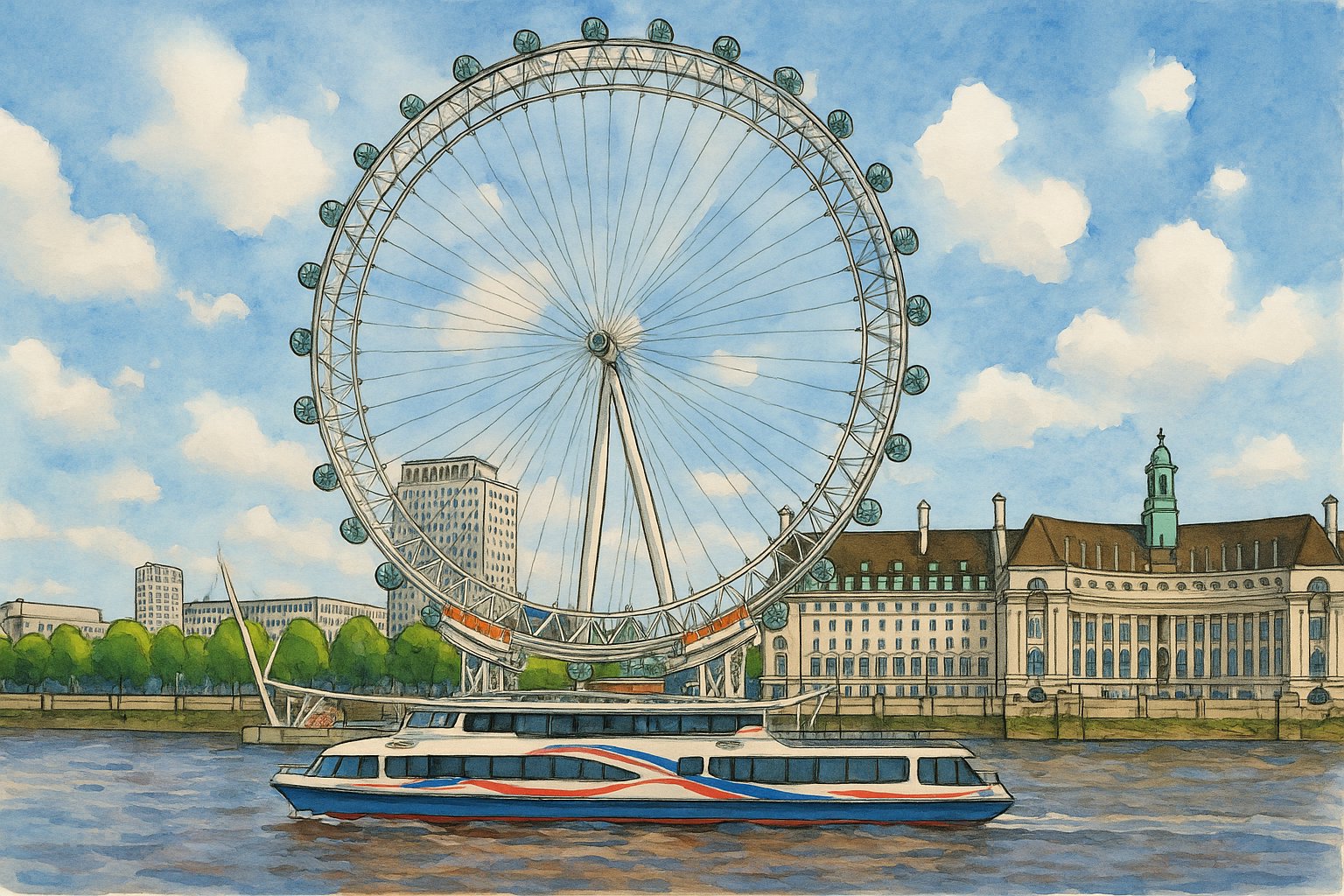
London Eye
A Modern Icon on the Thames
Rising gracefully above the South Bank, the London Eye is more than just a giant observation wheel—it’s a symbol of 21st-century London and one of the city’s most visited attractions. With panoramic views across the capital, it offers both locals and tourists a unique perspective on the historic and modern landmarks that define London.Where Is the London Eye?
The London Eye is located on the South Bank of the River Thames, directly opposite the Houses of Parliament and Big Ben.It sits within the borough of Lambeth, a few steps from Westminster Bridge and adjacent to Jubilee Gardens. Its riverside location makes it one of the most photogenic spots in the capital.
This central position places it at the heart of a bustling area filled with cultural institutions, including the Southbank Centre, the London Dungeon, and the SEA LIFE London Aquarium.
History of the London Eye
The London Eye was built to celebrate the arrival of the year 2000 and was originally known as the Millennium Wheel.Construction began in 1998, and the wheel was formally launched in March 2000 after several months of technical delays. At the time, it was the world’s tallest observation wheel—a title it held until 2006.
The structure was designed by husband-and-wife architects David Marks and Julia Barfield. Uniquely, the wheel was assembled lying flat on floating platforms on the river and then raised into its vertical position over several days using a complex system of cranes.
Although it was initially intended as a temporary structure for five years, its popularity led to it becoming a permanent fixture.
How Did the London Eye Get Its Name?
The name “London Eye” was coined to reflect the experience it offers: a sweeping, 360-degree view of the capital from above.While officially launched as the “Millennium Wheel,” the name "London Eye" quickly caught on with the public and was later adopted as its formal title. It captures the idea of a giant, all-seeing “eye” overlooking the entire city.
Over the years, its branding has changed with various sponsors. It has been called the British Airways London Eye, EDF Energy London Eye, and Coca-Cola London Eye. Today, it operates as the Lastminute.com London Eye.
Nearest London Underground Stations
The London Eye is easily accessible by public transport. Several London Underground stations are within walking distance:- Waterloo Station – This is the nearest station, just a 5-minute walk away. It is served by the Bakerloo, Jubilee, Northern, and Waterloo & City lines.
- Embankment Station – Located across the river, about 10 minutes away. It is served by the Bakerloo, Northern, Circle, and District lines.
- Westminster Station – Just across Westminster Bridge. Served by the Jubilee, District, and Circle lines.
Visitor Information
The London Eye is a paid attraction and operates daily, with opening hours that vary slightly depending on the season. The following information was updated in May 2025.- Opening hours: Typically from 11:00 AM to 6:00 PM. Extended hours may apply during holidays and peak tourist seasons.
- Standard admission: Approximately £33 for adults (16+), £30 for students/seniors, and £26 for children aged 3–15. Children under 3 ride free but still need a ticket.
- Fast Track tickets: Available for around £45, allowing you to skip the main queue.
- Online booking: Strongly recommended to secure a preferred time slot and receive a discount.
Additional experiences are available, including champagne flights and private pods for special occasions.
Fun Facts About the London Eye
- Each of the 32 glass capsules represents one of the London boroughs.
- The capsules are numbered 1 to 33—there is no number 13 for superstitious reasons.
- On a clear day, you can see as far as 40 kilometres (25 miles) in every direction—from Windsor Castle in the west to the Crystal Palace in the south.
- The entire structure weighs more than 1,700 tonnes.
- It attracts over 3 million visitors annually, making it one of the most popular paid tourist attractions in the UK.
Quick Facts
- Name: London Eye (formerly Millennium Wheel)
- Location: South Bank of the River Thames, London SE1
- Opened: March 2000
- Height: 135 metres (443 feet)
- Duration of ride: Approximately 30 minutes
- Nearest Tube stations: Waterloo (Jubilee, Northern, Bakerloo), Westminster (Jubilee, Circle, District), Embankment (Bakerloo, Northern, Circle, District)
- Operating hours: Usually 11 AM – 6 PM (subject to seasonal changes)
- Ticket price: Adults from £33, Children from £26
- Fun fact: Capsules are numbered 1–33, skipping 13!
London Eye is  on the Map of Tourist Attractions of London
on the Map of Tourist Attractions of London

Painting of London Eye, London (View image in full size)